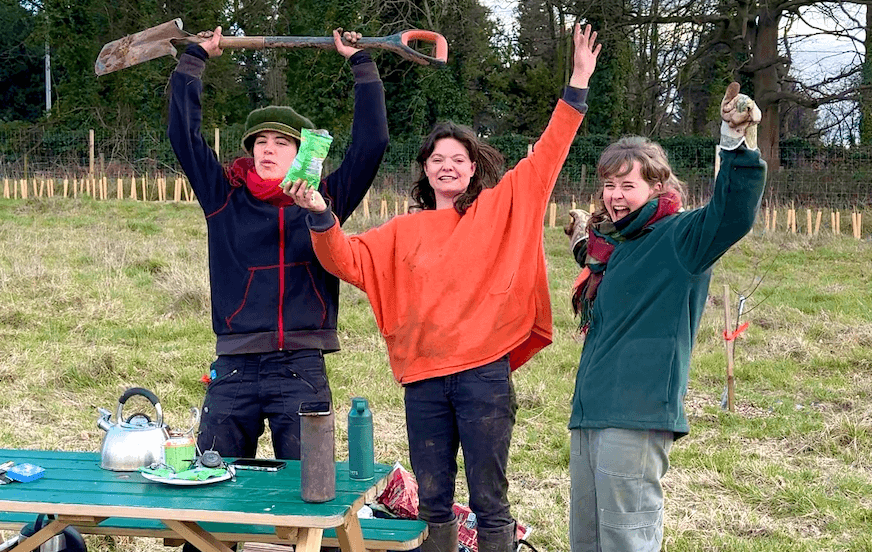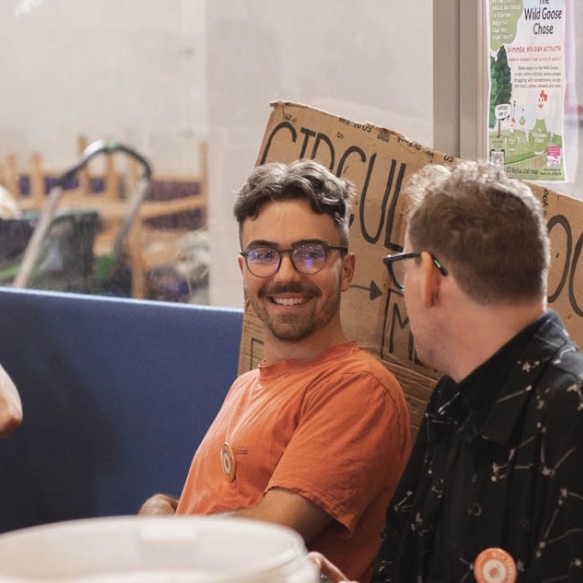Embracing Agroforestry: Growing Food And Climate Resilience
- Alex Montgomery
- Mar 26
- 3 min read
Updated: Oct 13
Agroforestry is one of the oldest and most effective ways to grow food in harmony with nature. By combining trees, crops, and shrubs on the same land, it creates a system that mimics natural forests supporting wildlife, protecting soil, and producing food year after year.
At Generation Soil, we use agroforestry in our food forest market garden to show Bristol and beyond how food can be grown regeneratively. This approach builds healthy soil, strengthens local food security, and helps communities reconnect with the land beneath their feet.
What Is Agroforestry?
Agroforestry means growing trees and plants together so that each supports the other. Instead of separating farming and forestry, it blends them to create balance and resilience. It’s an ancient idea with modern relevance, a nature-based solution to climate change, soil erosion, and biodiversity loss.

Common types of agroforestry include:
Silvopasture: Trees planted where livestock graze. The shade improves animal welfare and soil quality.
Alley Cropping: Rows of trees or shrubs planted between crops to provide shelter, mulch, and nutrients.
Forest Farming: Growing mushrooms, herbs, or food crops beneath an existing tree canopy.
Windbreaks: Tree lines that reduce erosion, protect crops, and shelter pollinators.
Riparian Buffers: Trees planted along rivers to stabilise banks and filter runoff.
Each of these systems helps farmers work with nature instead of against it, reducing inputs, improving resilience, and restoring balance.
Why Agroforestry Matters
Modern agriculture often relies on fertilisers, pesticides, and monocultures that degrade soil life. Agroforestry offers a low-input, high-benefit alternative.
1. Improves Soil Health
Healthy soil is alive, teeming with worms, fungi, and microbes that recycle nutrients. Trees add leaf litter and root biomass that feed these organisms and enhance structure. At the Bristol Living Compost Project, we enrich this process with living compost made from local food waste, building soil fertility naturally.
2. Boosts Biodiversity
Mixed planting attracts pollinators, birds, and beneficial insects. These living allies keep pest populations in check and improve overall ecosystem balance.
3. Captures Carbon
A single mature tree can absorb up to 22 kg of CO₂ per year. Combined with compost-rich soil, agroforestry turns farmland into a powerful carbon sink, one of the most effective tools for tackling the climate crisis.
Four. Strengthens Food Security
By growing fruits, nuts, herbs, and vegetables together, agroforestry ensures year-round harvests and less dependence on imported food.
Five. Builds Local Livelihoods
Growers can diversify income through produce, timber, honey, and compost, making regenerative farming both ecological and economical.

Agroforestry in Action at Generation Soil
Our two-acre food forest market garden in Bristol demonstrates what agroforestry can achieve in an urban setting. We are:
Planting fruit and nut trees alongside vegetables to create microclimates.
Building soil with biochar and living compost from Bristol’s food waste.
Harvesting rainwater to improve water efficiency.
Propagating perennial plants to create a self-sustaining ecosystem.
By integrating composting and agroforestry, we close the nutrient loop, food waste becomes living soil, which grows new food and supports community wellbeing.

How You Can Support Agroforestry
Everyone can contribute to soil regeneration and local food security.
In Your Garden or Allotment:
Grow a mix of trees, shrubs, and herbs.
Use living compost and avoid chemical fertilisers.
Keep soil covered with mulch or green manure.
In the City:
Join the Bristol Living Compost Project to help turn local food waste into compost.
Volunteer at community gardens and compost hubs.
Support educational workshops on regenerative growing.
As a Consumer:
Buy from local growers practising agroforestry and regenerative farming.
Choose seasonal produce from Bristol markets to reduce food miles.
The Future of Agroforestry
Climate change and soil degradation threaten global food systems. Agroforestry offers hope. A model where trees, microbes, and people grow together. It builds fertile living ground, protects biodiversity, and creates circular food systems that turn waste into abundance.

At Generation Soil, we envision a Bristol where every patch of land regenerates life from community gardens to school grounds and city farms. Agroforestry helps us get there.
Join the movement:
Become a member of Generation Soil.
Volunteer at our Food Forest Market Garden.
Collect your food waste with the Bristol Living Compost Project.

Because when we plant trees, feed the soil, and compost waste, we don’t just grow food. We grow community, climate resilience, and hope.




Comments